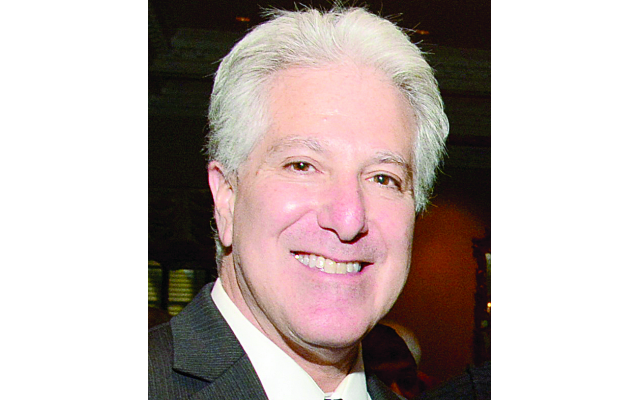Atlanta Doctor Takes on the Alzheimer’s Challenge
Dr. Allan Levey’s shares his latest wisdom on what is happening in the field.
After 37 years with the Atlanta Journal-Constitution and now with the AJT, , Jaffe’s focus is lifestyle, art, dining, fashion, and community events with emphasis on Jewish movers and shakers.
“It occurred to me that at one point it was like I had two diseases – one was Alzheimer’s and the other was knowing I had Alzheimer’s.” – Terry Pratchett, English author
When The Goizueta Foundation funded a large research project at the Alzheimer’s Disease Research Center at Emory University five years ago, a major transformation took place, according to Emory neurologist and neuroscientist Allan Levey, director of the ADRC.
The Wisconsin native received a Ph.D. and M.D. from the University of Chicago and further training in neurology from Johns Hopkins University before landing at Emory. He’s been studying Alzheimer’s disease since 1982.
On the cover of the Atlanta Journal-Constitution’s “Aging in Atlanta” section Nov. 4, 2018, Levey stated that “Alzheimer’s is now the most expensive disease in America, costing more than $277 billion a year.” He further said that “140,000 Georgians are living with Alzheimer’s …. we predict this will be a 35.7 percent increase to 190,000 by 2025.”
The term “Alzheimer’s” is credited to a German psychiatrist Dr. Alois Alzheimer, who wrote about it in 1906.
Get Levey’s latest wisdom on what is happening in this field:
Jaffe: Thinking of the rash of autism labels versus a decade ago, would you say that Alzheimer’s is indeed more prevalent or just diagnosed more aggressively?
Levey: That’s a good question. Alzheimer’s is more prevalent because we are living longer and surviving conditions like cancer, stroke and heart disease. The risk increases dramatically with age. At age 85, nearly one out of two individuals will have dementia, which is the umbrella term for these types of disorders.
Also, remember years ago, other terms like “senility,” “hardening of the arteries” were used previously, not realizing that Alzheimer’s was a disease. In the 1970s this became more clear.
It’s normal to find some degree of Alzheimer’s in the aging brain; 90 percent of autopsies in the elderly show some form of brain pathology, most often the amyloid plaques and tangles that define Alzheimer’s disease, as well as several other microscopic types of pathology.
Why can some elderly have a brain full of pathology but never experience cognitive decline? It’s the brain’s resilience to not show symptoms that we need to understand.
Jaffe: Are there any accurate tests to predict the disease?
Levey: Yes, there are tests currently available which are accurate, but they are not suitable for widespread use because of expense (PET scan) or invasiveness (spinal tap). We need a simple, non-invasive, cheap method of diagnosing the disease. We are conducting clinical trials seeking new biomarkers. Things like retinal imaging and blood tests are being examined, as well as many other innovative technologies. We also need to give more tools to primary care docs to screen for Alzheimer’s in a simple and efficient manner. Georgia has recently earmarked funding of $4 million to develop a statewide diagnosing system, because early diagnosis is so crucial to get help to the individuals with the disease and their families. This will become even more of a pressing need in the future with new treatments on the horizon, which will likely need to be started early in the course of the disease.
Jaffe: Are there any new treatments or medications?
Levey: No new types of medication have been approved by the FDA for treating the symptoms of Alzheimer’s disease in the last 15 years. And that means, unfortunately, that we are batting zero when testing new medications. However, there is a lot of promise for newer therapies that are currently being tested. Moreover, because the timeline for developing new medications and gaining FDA approval is so slow, often taking 20 years, there is also an important opportunity to repurpose existing medications that are used for other conditions.
For example, medications used to treat hypertension, diabetes, high cholesterol and attention deficit are all examples of strategies that are being tested in Alzheimer’s disease because they influence brain mechanisms that are now believed to have unanticipated relevance for the disease. There are no findings to show that natural remedies have any effect.
Jaffe: What are the indications that you have observed that make some more likely to succumb to Alzheimer’s?
Levey: Dozens of genes contribute to risk, sometimes leading to cases that run in the family. However, lifestyle and medical conditions also influence risk, in addition to genetics, and some are potentially modifiable. Negative risk factors include high blood pressure, high cholesterol, diabetes, and a sedentary lifestyle. Sound medical advice for virtually all conditions, including Alzheimer’s, is for exercise and a healthy diet.
Jaffe: Are a disproportionate number of Jews diagnosed with Alzheimer’s?
Levey: Not really. Alzheimer’s doesn’t discriminate.
Jaffe: Are you hopeful?
Levey: I believe that within one or two years it is likely that we will begin to have some of the first positive signals in clinical trials to slow and/or prevent the disease.
Jaffe: I look at the warning signs and wonder: “Is that me?”
Possible Warning Signs of Alzheimer’s Disease
• Forgetting recently learned information
• Memory loss disrupting daily life
• Familiar tasks difficult to complete
• New problems with words, speaking or writing
• Decreased or poor judgment
• Withdrawing from activities
• Confusion with time and place




comments